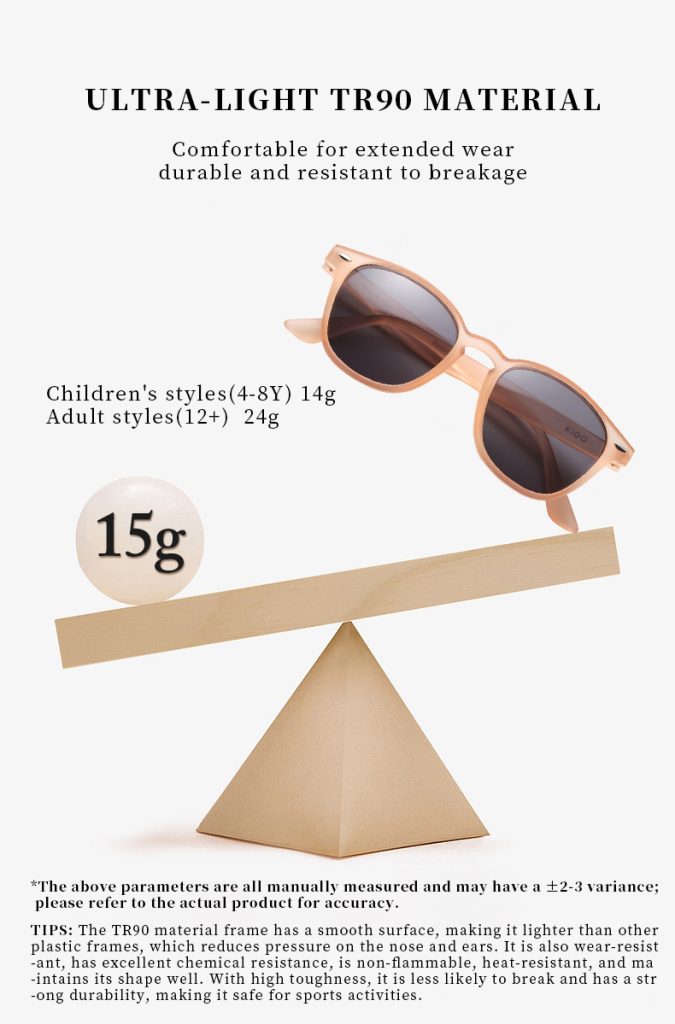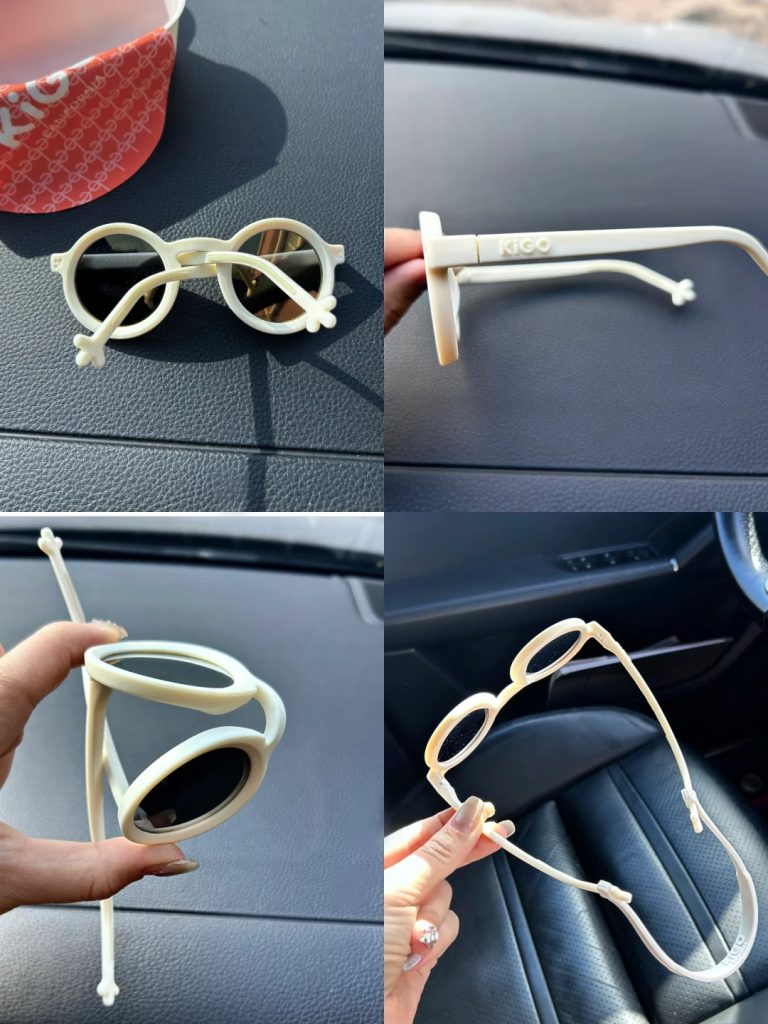- KIGO
- /index/\\think\\app/invokefunction
- %25252Findex%25252F%25255C%25255Cthink%25255C%25255Capp%25252Finvokefunction
- %2525252Findex%2525252F%2525255C%2525255Cthink%2525255C%2525255Capp%2525252Finvokefunction
- %2Findex%2F%5C%5Cthink%5C%5Capp%2Finvokefunction
- %252Findex%252F%255C%255Cthink%255C%255Capp%252Finvokefunction
- {search_term_string}
Over 200,000 children worldwide suffer eye injuries annually due to substandard sunglasses. Not sure whether to choose TPEE or TR90 for your child’s sunglasses? Discover the key differences and find the best frame material for safety, comfort, and durability.
Introduction
When it comes to choosing the right sunglasses for kids, frame material is just as important as UV protection. Two of the most popular materials in the children’s eyewear market are TPEE (Thermoplastic Polyester Elastomer) and TR90 (Thermoplastic Polyamide). Each material offers unique benefits in terms of flexibility, durability, and comfort—but which one is better for your child?
In this article, we’ll compare TPEE vs. TR90 to help you make an informed choice.
3 Non-Negotiable Standards
- Safety: Passes FDA food-grade contact certification.
- Flexibility: Withstands 90-degree bend tests without cracking.
- Lightweight Design: Under 20g optimal weight threshold.

What Is TPEE?
TPEE, or Thermoplastic Polyester Elastomer, is a soft, flexible, and highly durable material used widely in baby and toddler eyewear.
Key Benefits of TPEE for Kids Sunglasses:
✅ Ultra-Flexible: Can bend without breaking—ideal for toddlers and active kids.
✅ Shock-Resistant: Absorbs impact from drops and rough play.
✅ Safe and Non-Toxic: BPA-free and skin-friendly.
✅ Lightweight: Comfortable for all-day wear.
TPEE is often used in one-piece wraparound sunglasses that are designed to handle daily wear and tear.
What Is TR90?
TR90, or Thermoplastic Polyamide, is a lightweight, durable thermoplastic material commonly used in high-performance eyewear.
Key Benefits of TR90 for Kids Sunglasses:
✅ Durable and Resilient: Withstands deformation under stress.
✅ Feather-Light: Almost weightless on the face—perfect for older kids.
✅ Heat-Resistant: Maintains shape even in hot environments.
✅ Sleek and Stylish: Allows for more fashionable frame designs.
TR90 is a great choice for kids aged 6 and up who want more structured, grown-up looking frames.

TPEE vs. TR90: Side-by-Side Comparison
Feature | TPEE | TR90 |
|---|---|---|
| Flexibility | Very high – bendable and twistable | Moderate – returns to original shape |
| Durability | Excellent for toddlers | Excellent for older kids |
| Weight | Very lightweight | Ultra-lightweight |
| Comfort | Soft and safe for sensitive skin | Comfortable, sleek fit |
| Age Recommendation | Ideal for babies and toddlers (0–5) | Ideal for kids and pre-teens (6–12+) |
| Style Options | Simple, wraparound designs | More structured and fashionable |
Which Frame Material Is Best for Your Child?
Choose TPEE if your child is a toddler or preschooler who is still rough with their belongings. TPEE’s softness, safety, and flexibility make it the top pick for this age group.
Choose TR90 if your child is older and prefers a more grown-up, lightweight look. TR90 frames combine style and performance, ideal for active school-age kids.
✅All of KiGo‘s sunglasses are made of environmentally friendly TR90 material for those over 6 years old, which is ultra-light, environmentally friendly and not easy to break. TPEE material is used for those aged 0-6 years old, which does not deform even when bent. At the same time, the antibacterial layer is upgraded to effectively inhibit 99% of bacteria, and the skin-friendly process makes it suitable for babies with sensitive skin.
Final Thoughts
Choosing the right frame material can make a huge difference in how your child wears and enjoys their sunglasses. Whether it’s the ultra-flexible safety of TPEE or the featherlight durability of TR90, both options offer unique advantages tailored to different age groups and needs.
Looking for high-quality kids’ sunglasses made from TPEE or TR90? Explore our curated collection designed for children aged 0 to 12+—blending safety, comfort, and style in every pair.
Choosing the Best Frame Material for Kids Sunglasses: TPEE vs. TR90
Over 200,000 children worldwide suffer eye injuries annually due to substandard sunglasses. Not sure whether to choose TPEE or TR90 for your child’s sunglasses? Discover
Best Sunglasses for Toddlers in 2025: Top Picks for Comfort, Safety & Style
As parents, we all want to keep our little ones protected—especially when it comes to their sensitive eyes. If you’re searching for the best sunglasses
Do Kids’ Sunglasses Need to Be Polarized? The Ultimate Guide for Parents
As parents shopping for best sunglasses for toddlers or UV protection sunglasses for babies, you’ve probably wondered: are polarized lenses essential for children’s eye protection? Let’s break down
